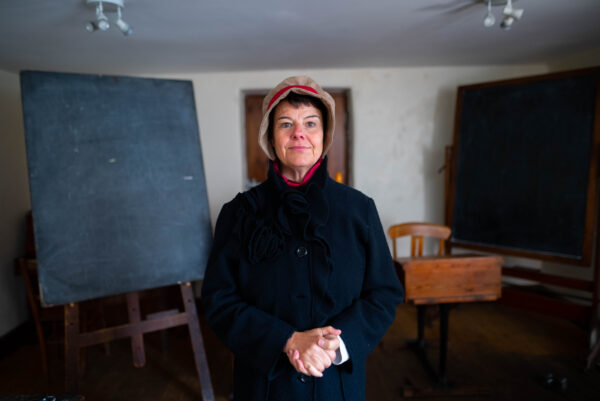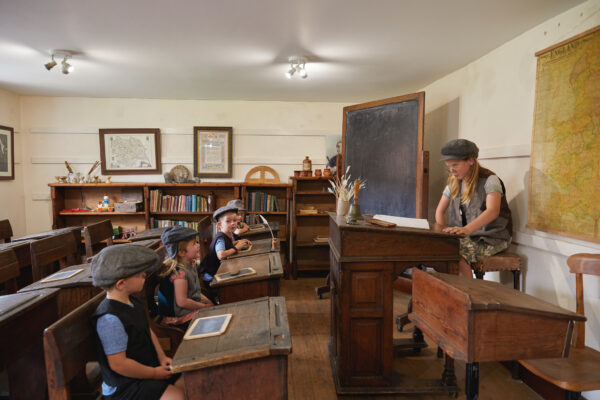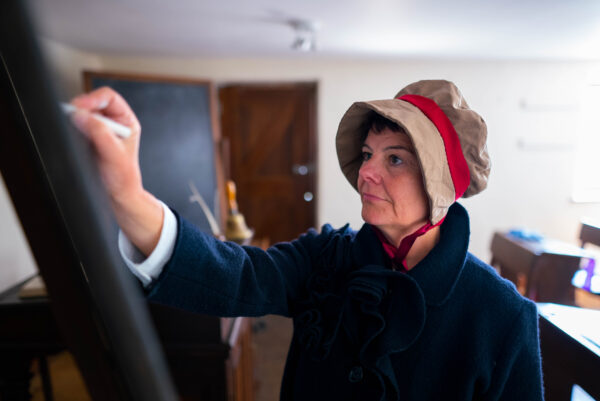Victorian Childhood - not always fun and games
When the Victorian era started in 1837, education for children from poorer families was very limited. Most children were expected to work. In cities, children would be given a range of jobs, often in factories, but in rural areas like Ryedale and the North York Moors, work on farms would be more common. Boys might be responsible for tying and stacking sheaves, for example, whilst girls might have domestic duties.
Any schools that did exist had been funded either through the Church or through charitable giving. We know in this area, a charity school had been funded for 80 boys in Helmsley in 1822 by C S Duncombe, and another by Lady Feversham for girls in 1832. Lord Feversham had also built a school in the moorland village of Farndale in 1829. However, many families still required their children to work.
It was only really from 1876 that parents were required to send their children to school and the Education Act of 1880 required that steps were taken to ensure children between the ages of five and ten attended. By the end of the nineteenth century, almost every village had a school of its own!
These resources have been created to help you explore life for children during the Victorian period.
Victorian schools
Try our Virtual Mini-Workshop
School days looked a little bit different in Victorian times. You can get a taste of school the Victorian way by exploring our school room at Ryedale Folk Museum. If you’re planning a trip, your students can take part in this virtual workshop before their visit. Alternatively, the workshop could be used as a standalone resource for anyone unable to visit us.
In the video, Miss Periwinkle leads your students in a short lesson. We think Miss Periwinkle is a rather kindly Victorian teacher, but she isn’t as encouraging as teachers today might be. You can discover more about what was expected of Victorian school pupils and how lessons were different. In Victorian times and up until the middle of the twentieth century, students were expected to stand when a teacher entered a room, as a sign of respect. Children would also be much quieter. They wouldn’t speak unless directly asked a question and there would be no opportunities to ask questions, even if they didn’t understand.
We’d really encourage educators to watch the workshop before you play it to your class and be ready to play along with Miss Periwinkle’s requests. After the workshop, praise your class on how well they did during the workshop and talk about whether they would like Miss Periwinkle as a teacher. Did they think she gave enough praise? Nowadays, teachers understand much more about how to motivate learners and get the best out of students. What do they think Miss Periwinkle found so surprising or shocking about your class and classroom?
You could also discuss how your class feel about Miss Periwinkle’s suggestions for future learning, such as copying out very long poems and learning them by heart. How was Miss Periwinkle’s lesson different from the sorts of lessons students have today? What was similar or familiar to your students?


Explore the Schoolroom
If you are planning an educational trip to Ryedale Folk Museum, we would encourage you to talk to your students about what they will see here. This footage will prepare students for where they are coming.
If you are unable to visit, we hope this footage will support you to explore Victorian schooling from the comfort of your classroom instead.
Questions to Talk About
As you watch the film footage of our Victorian schoolroom, or explore the schoolroom as part of a school visit, you could ask you students to think of as many differences as they can between the Victorian space and their own classroom today.
Victorian classrooms were often much darker places. Windows were positioned high up so that children (and teachers) did not get distracted by looking out of them and, of course, they wouldn’t have had electric lighting. Group work was completely unheard of, so children were seated in rows, facing the front. Our Victorian schoolroom contains educational resources, such as maps and the times tables, but it will no doubt still look more austere and less colourful than classrooms today.

Teachers didn’t have computer technology to help them prepare their lessons – or even whiteboards. Chalk and blackboards, as well as teacher-talk, were the main tools for educating the young people in their care. You may wish to discuss how punishments have changed too, such as use of the cane, fingerstocks or the dunce’s cap.
You could discuss some of these questions with your class too:
- Do they recognise the person in the portrait? Would students like to have a picture of the monarch on their wall?
- What were the quills used for, positioned on the bookcase?
- What are the games on hanging up on the wall and on the shelves? How was playtime different in Victorian times?
At Ryedale Folk Museum – planning your visit
During an educational visit, you’ll be able to explore our Victorian schoolroom with your students as well as a Victorian cottage and washhouse.
Don’t forget to download and photocopy Spotter Sheets to help your students explore the spaces.
Whilst you’re here, don’t forget to try out your own lesson in the schoolroom, Victorian-style. You can use the virtual workshop as a inspiration for acting out your own lessons. Your students will be able to take on the roles of Victorian school pupils and even the teacher during their visit.
Miss Periwinkle recommends that students study some very long poetry, but we have a suggestion of a shorter, slightly more fun poem that your students could try to learn to recite in our schoolroom. Students may wish to learn one line each.
You can download a PDF of all the notes on this page to take with you.
Booking Information
You can book self-led visits to our site by emailing [email protected] or by calling 01751 417367.
The cost of a self-led group visit is £6 per child including VAT, with an accompanying adults visiting for free.
